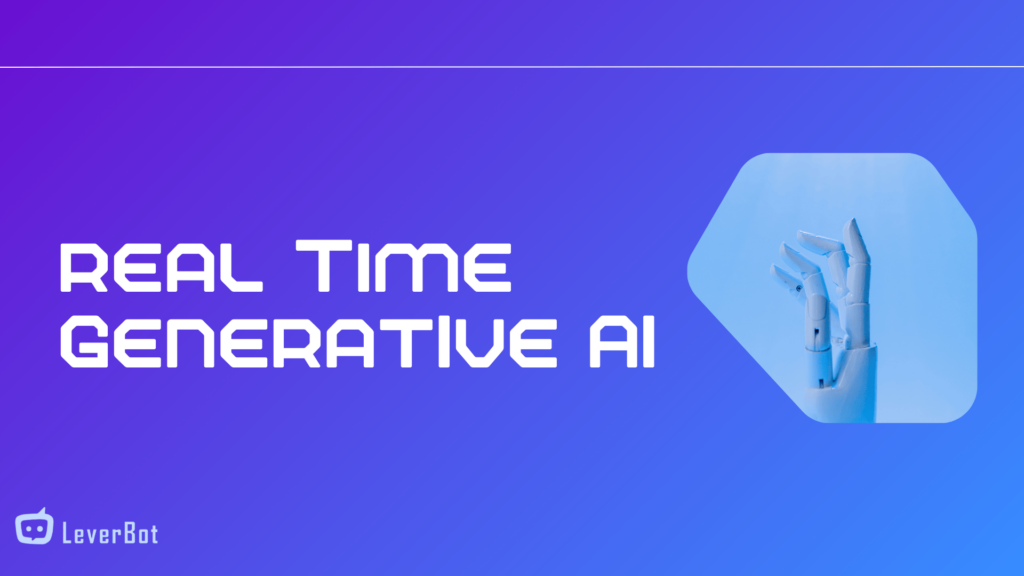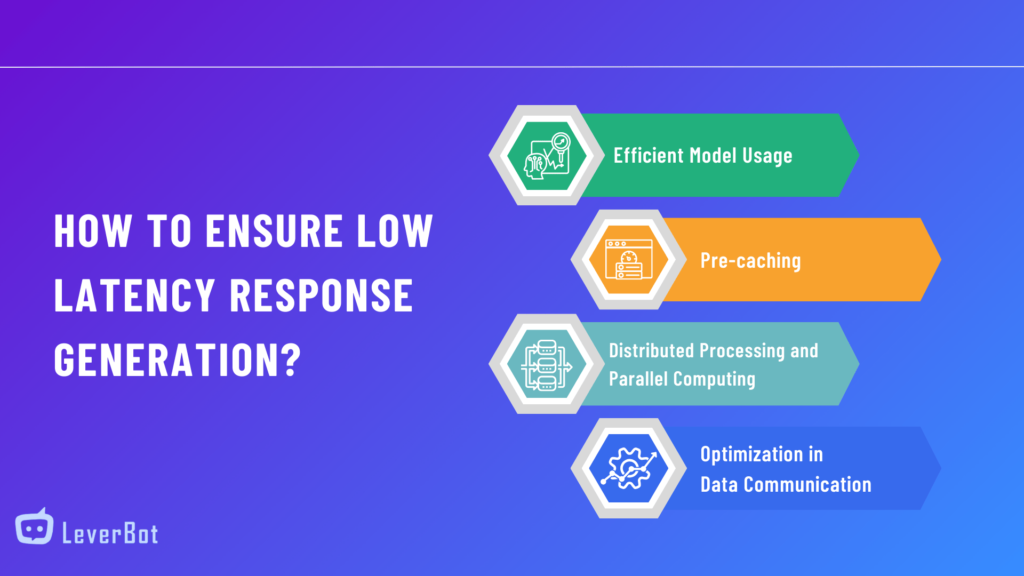
In today’s digital age, users’ expectations for fast and effective responses are growing every day. Chatbots are increasingly being used to meet these expectations. However, to enhance the user experience, chatbots need to produce not only accurate but also low-latency responses. In this blog, we will explore the topic of low-latency response generation with real-time generative artificial intelligence in depth.
What is Real-Time Generative AI?
Real-time generative AI refers to AI systems capable of generating high-speed and accurate responses in real-time user interactions. It is used to ensure low latency so that chatbots can quickly respond to user requests. Generative AI models perform tasks such as text generation, language understanding, and other natural language processing (NLP) functions.
How to Ensure Low Latency Response Generation?

1.Efficient Model Usage:
Utilizing models such as GPT-4 , Llama efficiently is essential in real time generative AI systems. This involves optimizing the complexity and the number of parameters in the model. Faster and lighter models can significantly reduce response times.
2.Pre-caching:
Pre-computed responses and data caching can dramatically lower response times. Frequently asked questions and routine interactions benefit from this by delivering instant replies.
3.Distributed Processing and Parallel Computing:
Supporting real time response generation can be achieved using distributed processing and parallel computing techniques. These methods help reduce processing time when dealing with large data sets, speeding up the response time.
4.Optimization in Data Communication:
Optimizing the communication between the chatbot, servers, and databases can further minimize latency. Using efficient data communication protocols helps eliminate bottlenecks in data transmission.
Advantages of Latency Response Generation

1.Enhanced User Experince:
Real-time response provide instant and meaningful feedback, boosting user satisfaction and encouraging engagement.
2.Increased Efficiency:
Quick responses make processes more efficient, saving time and speeding up workflows for both users and businesses.
3.Better Customer Service:
Fast and accurate replies help resolve customer issues quickly, enchancing satisfaction and providing 24/7 support.
4.Higher Engagement Rates:
Immediate responses encourage users to interact more with the chatbot, increasing its effectiveness and usage.
5.Rapid Feedback and Improvement:
Real-time responses facilitate quick collection of user feedback allowing for continuous system enchancement.
Conclusion
Real-time generative AI is a critical component in enabling chatbots to produce low-latency responses. Techniques like efficient model usage, caching, distributed processing and optimized data communication all contribute to reducing response times and improving the user experience. Implementing this technology in chatbots not only enhances customer satisfaction but also boosts operational efficiency for businesses. In the future, innovations in this area will make chatbots faster, smarter, and even more effective.
As Leverbot, we enable you to offer your customers a more effective and faster Chatbot experience by using these techniques and tools. Get Leverbot now and capture the future of your business by giving your customers this experience.


